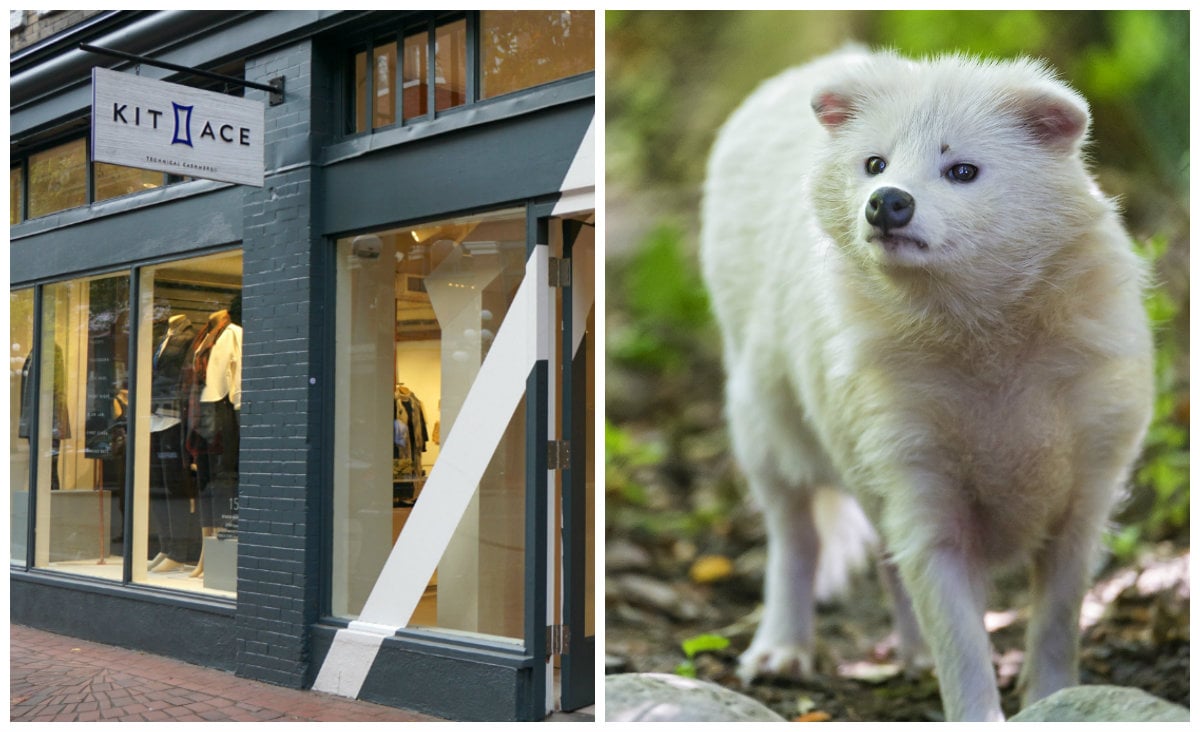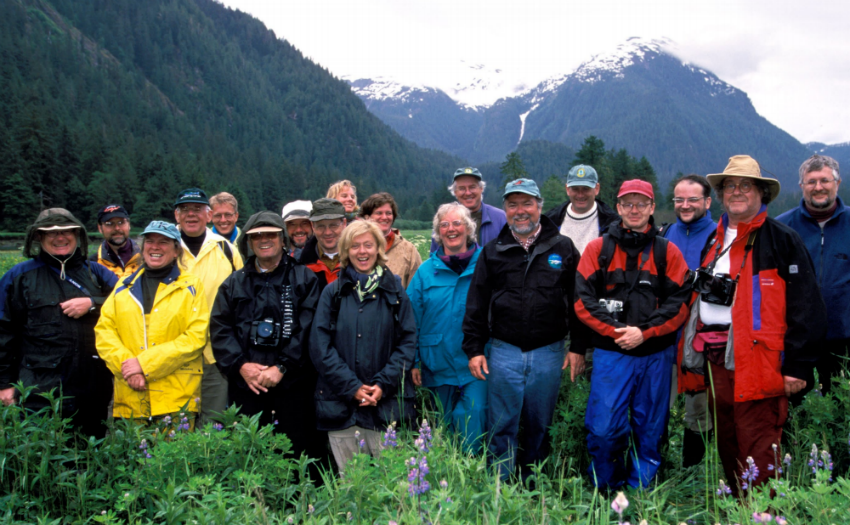About five years ago, an environmental organization called Canopy discovered a link between endangered ancient forests and the rayon found in popular clothing sold at shopping malls in Vancouver, B.C.
Canopy discovered that the base material used to produce rayon — a soft kind of fabric often used as an alternative to silk — is derived from the pulp wood of ancient ecosystems in Indonesia, Canada's Boreal and temperate rainforests, and the Amazon. That chemical conversion process wastes 70 per cent of the tree, says the Vancouver-based advocacy group, which has since led the charge against forest degradation for the sake of fashion.
On Monday, its efforts paid off and the largest apparel conglomerate in the United States, VF Corporation, vowed to work with Canopy to safeguard biological diversity by making fashion more forest-friendly. The initiative, called CanopyStyle, aims to stop using ancient and endangered forests in producing tree-derived fabrics like rayon by the end of 2017.
"When a player this big sends this clear a signal around their intentions... suppliers take notice," said Nicole Rycroft, Canopy’s executive director. “When we started reaching out to brands, to be honest there were some brands [that were] not aware rayon came from trees."
The US$12-billion VF Corporation, which controls clothing brands like Vans, The North Face, Timberland, Wrangler and Lee, publicly released its new “Forest Derived Materials Policy” on Feb. 27, which covers clothing, paper and packaging practices. The document “provides guidance” to the company’s associates and suppliers, and aims to make products “with recycled fiber whenever possible.”
“We’re really focused on climate change and making sure we reduce our impact,” Letitia Webster, VF’s vice-president of global corporate sustainability, told National Observer. “One of the big issues that we wanted to begin to curtail was the destruction of important forests.
"We’re doing it because it’s the right thing to do... it’s just part of our value proposition of who we are as a company.”
The company's suppliers were notified in an internal rollout the policy was released, said Webster, adding that the San Francisco-based environmental organization Rainforest Action Network will be helping the company work with its suppliers to track its implementation.
“This is now the new way of business,” she explained, noting the company has also committed to sourcing 100 per cent renewable energy by 2025.
The policy also includes the promotion of paper and fiber certified by the international non-profit Forest Stewardship Council, which assesses sustainably managed forestry companies.
According to Canopy, more than 120 million trees are used each year to produce unsustainable, inefficient fabrics like rayon. The environmental group says it’s now working with close to 100 fashion brands, retailers and designers on the initiative to ban the practice for good. Its partners include H&M and Sprint.
The vast majority of cellulosic fabric is manufactured in China, said Rycroft, but Canada is one of the top-sourcing regions.
Natural Resources Canada told National Observer in a statement that Canada exported 426,000 tonnes of dissolving pulp, valued at $361 million, in 2016. The federal department also said that the top five destinations, by value, were India ($89 million), Indonesia ($56 million), Thailand ($53 million), China ($49 million) and the United States ($41 million)
"Natural Resources Canada is presently looking into the amount of wood fiber used in Canada to produce dissolving pulp. Further information will follow as soon as possible," the department said in the same statement.
Canada has 348 million hectares of forest lands, representing about nine per cent of the world’s forest, and 0.2 per cent of Canada’s boreal forests are harvested each year, according to figures posted publicly on the department’s website.
Editor's note: This story was updated at 11 p.m. ET on Feb. 28, 2017 with a statement from Natural Resources Canada.





Comments
Oop's, Bamboo forests were NOT mentioned that are also used in Dissolved Pulping Operations. I am being a little sarcastic but truly appreciate the energy CANOPY is dedicating to educating Processors and Clothing Manufacturer's. Bamboo finer for clothing was also touted as the new meow, while we were ignorant that the Neurotoxin, Carbon Disulphide also poisons workers in Pulp Mills and Thread Extraction Plants.
I suffer from exposure to Carbon Disulphide working on the Dryden Air Emissions Project in 2003. There were 59 tradesman on oxygen my last day of work there. Environment Canada listed 72 Pollutants which they felt had high enough Daily Tonnages to either Monitor OR Report. I had to stop driving to work a year later after being gassed again at the Pulp Mill in Terrace Bay Ontario that has plans on converting to a Dissolved Pulping Operation. Contaminants in Vehicle Exhaust were causing the same sequela of symptoms i suffered my last day of work at Dryden a year earlier.
I now suffer a Compensable Toxic Fume Injury after a fight with no income for 3.5 years. Welcome to the world of Occupational Disease when our W/health Care System has very few Dr’s trained in Toxicology and Occupational Disease. Ethylene oxide another Neurotoxin used as a softener in plastic tubing was also causing complications when I was on an oxygen mask and C-Pap pump for apnea. A friend with MCS said, doesn’t it feel like Ninja Stars Stabbing the inside of your lungs, Bingo!.
Why rayon is killing industry workers: author Paul Blanc - Home | The ...
www.cbc.ca/.../why-rayon-is-killing-industry-workers-author-paul-blanc-…
Feb 9, 2017 - Author of Fake Silk, Paul Blanc says the manufacturing of viscose rayon ... For well over a century, viscose rayon has been used to make ... The key ingredient in the making of viscose is a molecule called carbon disulfide — a molecule so insidiously toxic that it ... Report Typo or Error Send Feedback ...
Missing: neurotoxin intoxic natural
Bamboo textiles no more 'natural' than rayon - CBC News - Latest ...
www.cbc.ca/news/bamboo-textiles-no-more-natural-than-rayon-1.938759
Feb 1, 2010 - Textiles derived from bamboo must be labelled as rayon or viscose to counter ... years ago, sold as an eco-friendly alternative to cotton, silks and polyesters. ... hydroxide, also known as caustic soda or lye, and carbon disulfide and turned ... A diluted sulfuric acid solution is used in that part of the process.
Mercury contamination of waterways is also part of this crisis.
Cleaning up mercury a must in Grassy Narrows | Toronto Star
https://www.thestar.com › Opinion › Commentary
Jun 1, 2016 - The federal and provincial governments cleaning up the Wabigoon River will show ... Mercury in the Wabigoon River has caused brain damage in Grassy Narrows residents. ... That same year, a pulp and paper mill in Dryden, Ont., began ... Mercury contamination has triggered an ecological crisis that has ...
DuPont to pay $50M over mercury-contaminated Virginia rivers | U.S. ...
www.usnews.com/news/.../dupont-to-pay-50-million-over-mercury-dumped-in…
Dec 15, 2016 - (AP) — Chemical giant DuPont would pay around $50 million in a proposed settlement aimed at making up for the toxic mercury that ... the Clean Water Act, related to the pollution from a company factory in Waynesboro. ... decree that was filed in federal court in Harrisonburg on Thursday.